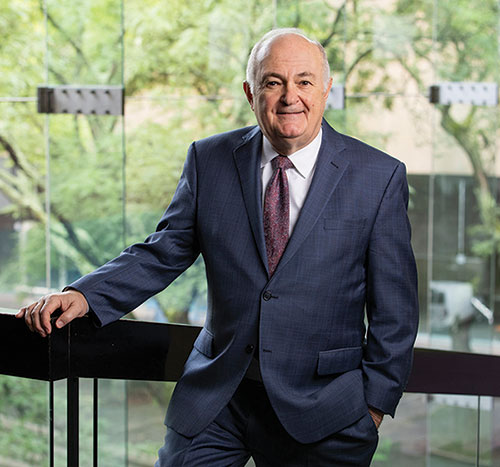 Photo: Joshua Franzos
Photo: Joshua FranzosEarlier this year, we celebrated a history-making $65 million gift from Dan and Carole Kamin that will not only change the name of the Science Center—to the Daniel G. and Carole L. Kamin Science Center—but also mark an exciting new chapter for science-based learning on the North Shore. In his remarks to our staff and the media, Dan noted that his love of science began on boyhood visits to the Buhl Planetarium and Institute of Popular Science, which became Carnegie Science Center in 1991. The Kamins believe, as we do, that the experiences young people have in our museums can and do last a lifetime.
They also believe in the importance of our museums’ continuing to expand their engagement with the communities we serve. That engagement takes many forms, as you’ll read about in this issue.
At the Museum of Art, the Neighborhood Museum program is serving as a resource for refugee families through hosted visits in their home languages, artmaking, and free family memberships.
Last summer, Carnegie Museums joined Carnegie Library of Pittsburgh and the University of Pittsburgh in a call for art with the theme “Envisioning a Just Pittsburgh.” More than 160 artists responded, many of them immigrants, and on February 2 we honored the winners at a moving and inspiring opening reception for a monthlong showcase of their work.
The next total solar eclipse to cross North America will occur on Monday, April 8, and the Science Center is making plans to host a few thousand members of the community at a watch party similar to the one it hosted on August 21, 2017, the date of the last total solar eclipse with a path of totality within the United States. Staff members still talk about the strong sense of community they felt with the thousands who flocked to—where else?—the Science Center to witness that historic moment.
The Museum of Natural History continues to build on its deep connections with Indigenous communities in Pennsylvania and beyond. Those connections are integral to its role as the caretaker of culturally important collections, which include the human remains and sacred artifacts of long-deceased Native American peoples. You’ll read about the ways in which the museum—like many others across the country—has had to come to terms with how these human remains ended up in their collections so many decades ago, and how we are handling the repatriation of those remains, when possible, in culturally respectful ways.
You’ll also read about Carnegie Music Hall, which is reopening this March after its most extensive renovation in 128 years. This magnificent “palace of music,” as it was originally hailed, was intended by Andrew Carnegie to be a year-round community gathering space. It will at long last serve that purpose for all—even in the hot summer months—thanks to new accessible seating and its first-ever air-conditioning system. (Until now, the hall had been “cooled” by a large wooden fan that was state-of-the-art when it was installed—state-of-the-art, that is, in 1905!) We look forward to welcoming the community back to this splendid monument to our city’s cultural legacy that, among its other roles, was the original home of the world-renowned Pittsburgh Symphony Orchestra.
Steven Knapp
President and Chief Executive Officer
Carnegie Museums of Pittsburgh
Receive more stories in your email
Sign up